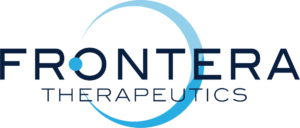May 16-18, 2024— the 23rd China Biological Products Annual Conference was held in Guangzhou, China. Dr. Li Aiqun, Director of QC, Frontera Therapeutics, was invited to participate in the symposium of “Immune Cells, Stem Cells and Gene Therapy” and focused on “Quality Control of rAAV Gene Therapy Products: Challenges of Next Generation Sequencing and Residual DNA Detection” were presented.
Dr. Li Aiqun gave an overview of quality control of rAAV gene therapy products at the meeting, and focused on sharing the analytical methods for residual DNA testing. Dr. Li introduced process-related residual DNA methods and the evolution of regulatory limits, and discussed the impact of different analytical methods on residual DNA results. Dr. Li also shared genomic and residual DNA characterization of rAAV products by next generation sequencing (NGS). Points for consideration regarding NGS analytical strategy based on sequencing purpose were discussed.
Process-related residual DNA levels is a critical quality attribute of biological products. Historically, residual DNA limits were recommended by agencies for common industry production platforms ranging from CHO to insect cells, for monoclonal antibodies to rAAV. Appropriate risk assessment for limits suited for a specific product or process should consider specifics and potential caveats of the analytical method itself.
NGS is a powerful tool for the analysis of DNA-containing products, and can show DNA-related attributes from many aspects. However, the NGS method setup and overall strategy, including sample preparation, sequencing platform, etc., needs to be considered and chosen for specific analytical objectives.
“Accurate quality analysis data can only be obtained if we have a deep understanding of the details of the analytical method and its suitability for the purpose of the test,” Dr. Li Aiqun said. Frontera Therapeutics will, as always, devote itself to the development of analytical methods for rAAV products, improve analytical capabilities, ensure product quality, and thus contribute to the improvement of the overall level of the industry.”
